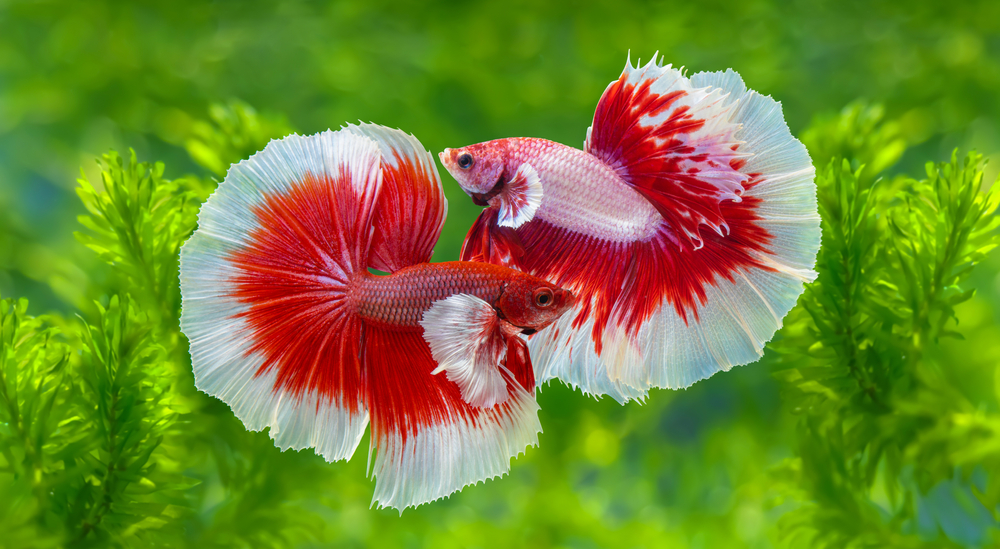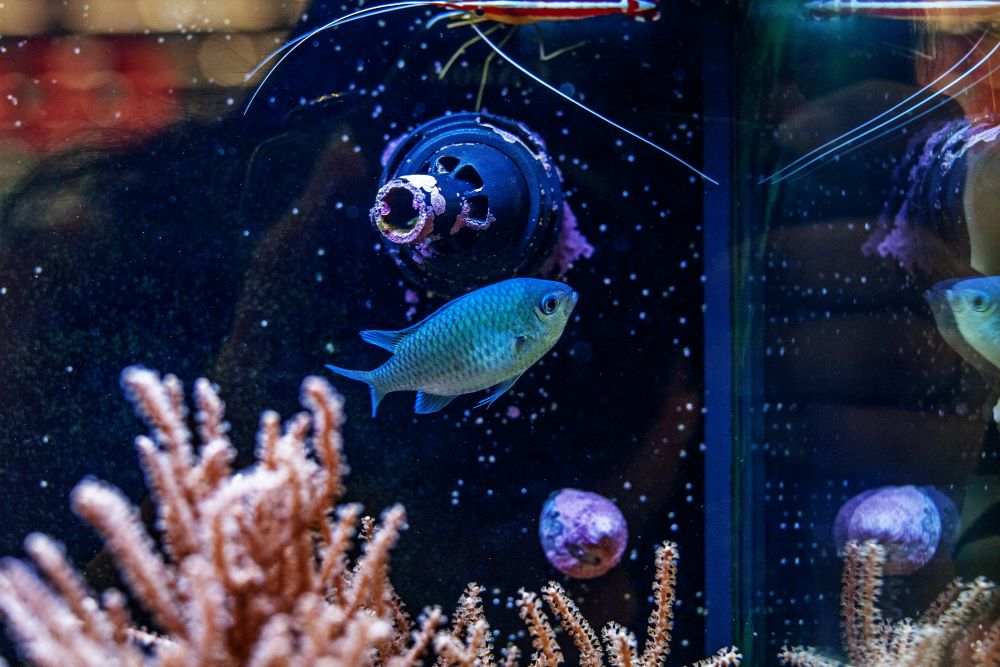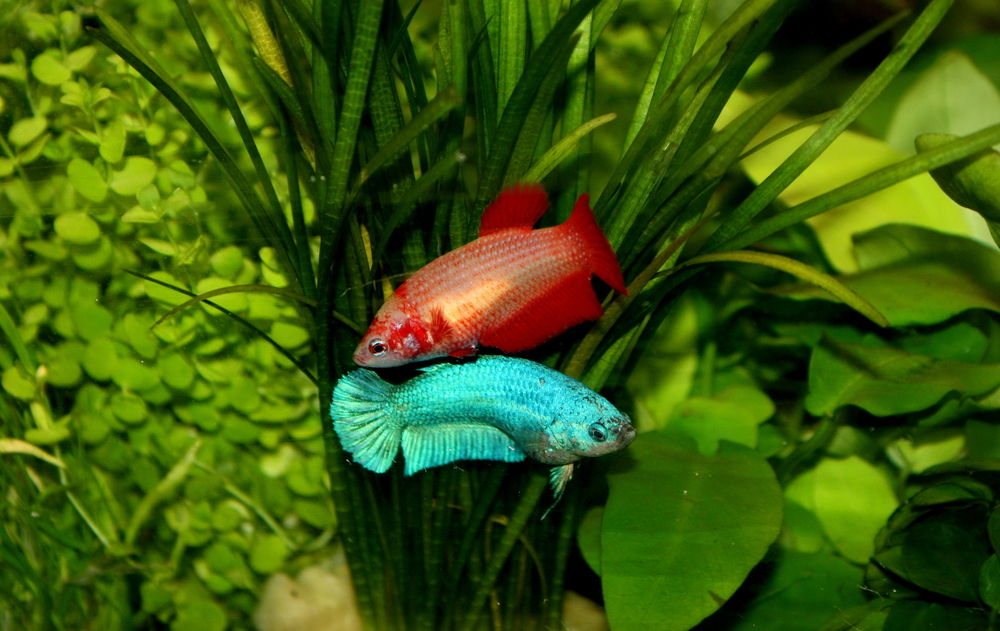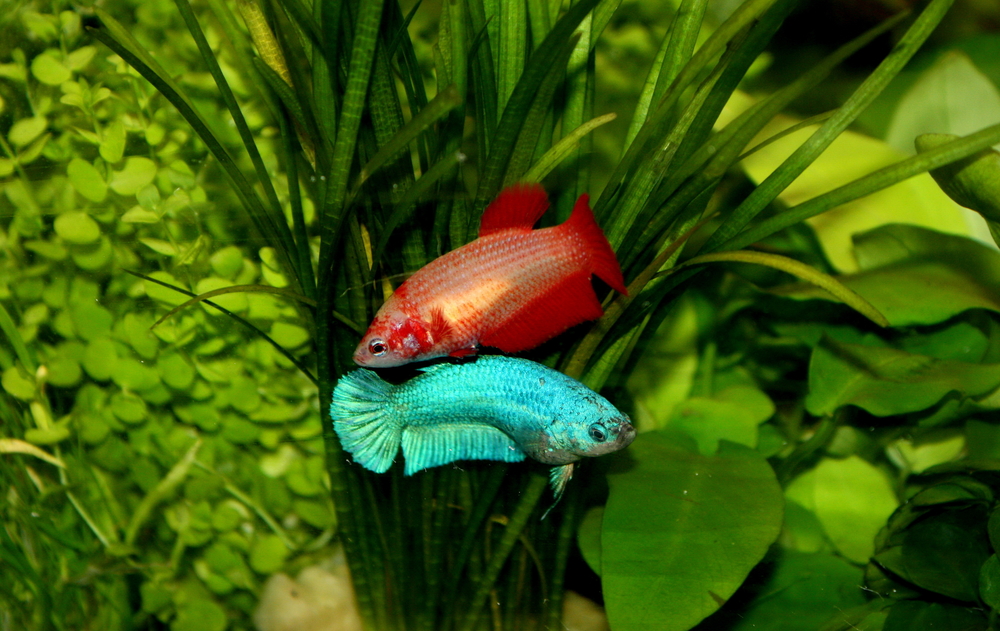New betta aquarists must remember the breeding issue when preparing for their first pet. But bettas need to breed, which significantly expands the scope of betta care, even regarding fish numbers.
It’s good that you’re reading this post; it means you at least understand the importance of accounting for your betta’s reproductive needs. Understanding what to do about said needs is all that remains.

This article will discuss all aspects of betta fish breeding, focusing mostly on the offspring. We’ll address key questions like how many eggs the species lays and the optimum environment for the fry. Additionally, we’ll discuss how to improve your betta’s breeding success. So, let’s get right into it.
Contents
Reproduction of Betta Fish
You can see some of Betta splendens’ complex and fascinating behaviors from the species’ reproductive process. These behaviors include a charged mating ritual and caring for the eggs from laying to hatching. This section will discuss all these aspects. Understand more on betta behavior from these other top posts:
Mating Process
Betta fish perform intricate mating rituals that may look and sometimes turn violent. The male often initiates the process, flaring his gills to impress the female with his vibrancy.
If she’s interested, she signals so by darkening her pigmentation and showing vertical lines called breeding bars. Her egg spots also become more visible.
Nest Building
Bubble nest building is vital in betta fish reproduction, but males of the species technically build these nests whether or not they’re about to mate. Bubble nests mark the territory as a given male’s reproductive zone so that only interested females are welcome.
A male may build many variously sized and thick nests, often at the water surface, with surface-breaking plants or rocks as the base. Saliva and air are the building materials. Before mating starts, the female may inspect the nest, often moving off if she finds it unsuitable to hold her eggs post-spawning.
Egg Laying

The egg-laying or spawning process is also called the “nuptial embrace” because it involves the male wrapping itself around the female, often several times in succession. The female releases 30 to 40 eggs in each embrace; the mating exercise can sometimes produce up to 500 eggs, only ending when the female has no eggs left.
Fertilization is external, with the male releasing milt into the water between each deposit of eggs. Once the eggs are out and fertilized, the female floats about exhausted, and from here, she is no longer welcome, and the male may become aggressive toward her.
Egg Care
Post-fertilization, the male betta assumes the role of caretaker. He meticulously gathers the fertilized eggs in his mouth and places them into the bubble nest. Then he guards them till they hatch, often repairing any subsequent damage to the nest and retrieving any fallen eggs.
Hatching and Early Life
Betta eggs hatch into fry within 24-36 hours but remain in the bubble nest for a few more days until their yolk sacs are entirely absorbed. Then, the fry can swim on their own and leave the nest. Most importantly, while not all the eggs will hatch under favorable conditions, up to 80% might.
This means you may have hundreds of new betta fry on your hands. Caring for them will come later, but for now, know that the male continues to care for the fry until they leave the nest, so you can only start caring for them afterward. As the young fish grow, feeding them appropriate food like micro-worms or brine shrimp is crucial for their development.
Betta Fish Egg Details

Betta fish spawn many eggs at once, so you can’t miss the whole clutch, even if one is difficult to spot. But betta eggs are unique, and as a new aquarist, you might initially think something is wrong with them.
This section will enlighten you more about these eggs, discussing everything from their appearance to required care and conducive aquarium conditions.
Egg Appearance and Development
Wild betta fish eggs are tiny and vary between 1 to 1.5 millimeters in diameter when unfertilized. The egg size ranges from 0.9 mm to 1 mm in domestic bettas. For mouthbrooding bettas, the eggs are larger, around 2-3mm, and may take longer to hatch. Across all types, the egg shape is slightly oval.
When unfertilized, the betta eggs are white but turn light yellow once fertilized. However, the eggs can also turn other colors, often indicating something is wrong. For example, when rotting, the eggs start going gray or developing gray spots. Betta eggs are also vulnerable to fungal infection, often turning a sickly yellow when they develop one.
Fry Development and Care

Betta eggs retain their yolk sacs for a few days after hatching. These sacs supply all the necessary nourishment for the time being. However, the yolk sacs soon absorb, and the fry requires a controlled diet. The best starter foods for new betta fry are newly hatched brine shrimp or liquid fry feed.
These will provide the much-needed nutrients for growth. You should note that betta fry is way more at risk of overfeeding than adult betta since fry has much smaller stomachs and may even die directly or indirectly from such over-snacking.
Environmental Factors for Successful Breeding
Betta fish eggs are delicate, so the aquarium conditions must be just right for the parent pair to spawn the eggs. For example, the water temperature must be about 78 to 80 degrees Fahrenheit.
Other relevant parameters include the water PH, ideally kept between 7.0 and 7.2; ammonia and nitrate levels, ideally maintained at 0 ppm; and nitrite, ideally kept near zero. If the parameters stray too far from these ranges, the eggs may not be viable once laid.
Improving Breeding Success
Having discussed betta eggs, let’s turn to the spawning pair. The health of the eggs depends significantly on the success of the breeding pair. So, how can you make sure your two bettas breed successfully?
Choosing a healthy breeding pair of betta fish is the most important thing. You should already be providing quality medical attention for your betta, treating any ailment at the first sign, and keeping the aquarium sanitary at all times. Thus, your pet betta will be healthy enough to breed.
If the betta is healthy, it will be vibrantly colored and active, even building bubble nests. However, if the fish shows signs of illness and deformity, it needs treatment immediately.
Knowing When Your Betta Female Has Eggs
So far, we know that male bettas build bubble nests when they’re ready to mate. Female bettas’ signs of readiness to mate are different and more easily mistakable. Rather than pregnant, betta females become gravid, meaning they bloat up due to all the eggs they now carry.
However, not every instance of bloating is gravidity since overfeeding can cause bettas to puff out. So, how do you determine if your female betta is gravid or just overfed? You can look for white secretions coming out of her ventral end. Her lateral line may also become more visible; as she nears laying time, you may also notice a bulge in her anal area.
Final Thoughts on How Many Eggs Do Betta Fish Lay?
Betta fish lay many eggs, which can be a concern since having so many new mouths to feed can be financially draining. The good news is twofold: you only have to breed your bettas twice monthly, and the father betta will not protest your removing the newly hatched fish after they leave the bubble nest.
If you don’t want to raise the fry, you can always gift, sell, or euthanize them. Alternatively, you can feed them to a larger, culling species.
Frequently Asked Questions

This section will provide fast answers to some common inquiries about betta fish and their eggs.
What should I do if my betta fish has laid eggs?
You should maintain optimal water conditions if your betta fish has laid eggs. Start by keeping the temperature between 80 and 82 degrees Fahrenheit. Next, monitor the pH and keep it neutral. Then, let the male betta take care of the eggs. The male betta will place the eggs in a bubble nest and guard them jealously.
What is the hatching time for betta fish eggs?
If the water conditions are right, betta fish eggs generally hatch within 48-72 hours. It is critical to keep the tank’s environment stable during this period.
Can betta fish eggs hatch without the presence of a male?
No, betta fish eggs need to be fertilized by a male to hatch. An unfertilized egg will not hatch into a fry.
How many babies do betta fish typically have at one time?
A betta fish can have anywhere between 30 to 100 fry at one time, with instances of up to 500 being less common. However, not all the eggs may hatch.
What is the survival rate for betta fish eggs to adulthood?
The survival rate for betta fish eggs to adulthood can vary greatly, but about 70-80% of the eggs may hatch into living fry. Factors like water quality and disease can significantly impact survival rates.
How long does it take for a betta fish egg to hatch?
A betta fish egg hatches in approximately 24-36 hours, depending on the temperature and other water conditions. The male betta should be present to care for and protect the eggs during this time.

Ian Sterling, founder of Fishlab.com, began his aquarium journey over 30 years ago, driven by a deep fascination for fish and their diverse personalities. His website, Fishlab.com, is dedicated to making fishkeeping accessible and enjoyable, offering beginner-friendly guidance, expert insights, and a community for aquarists to connect and share experiences.


